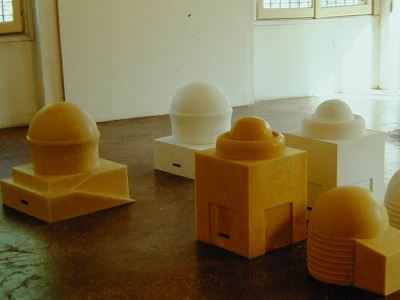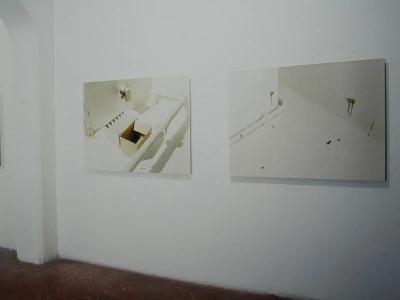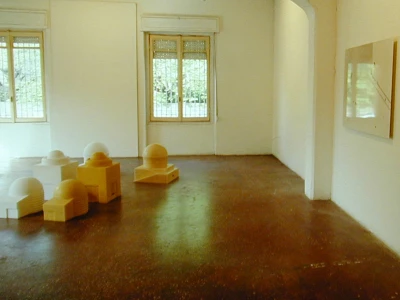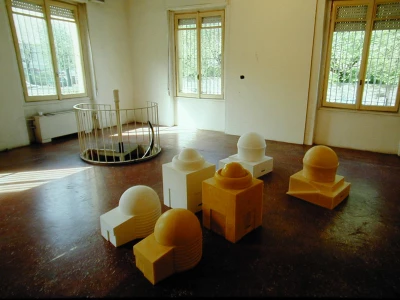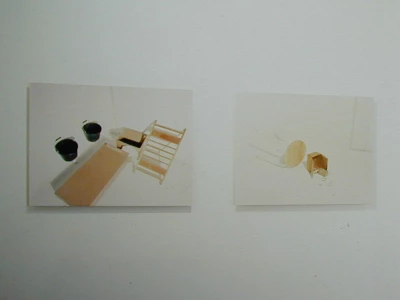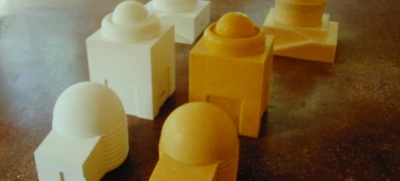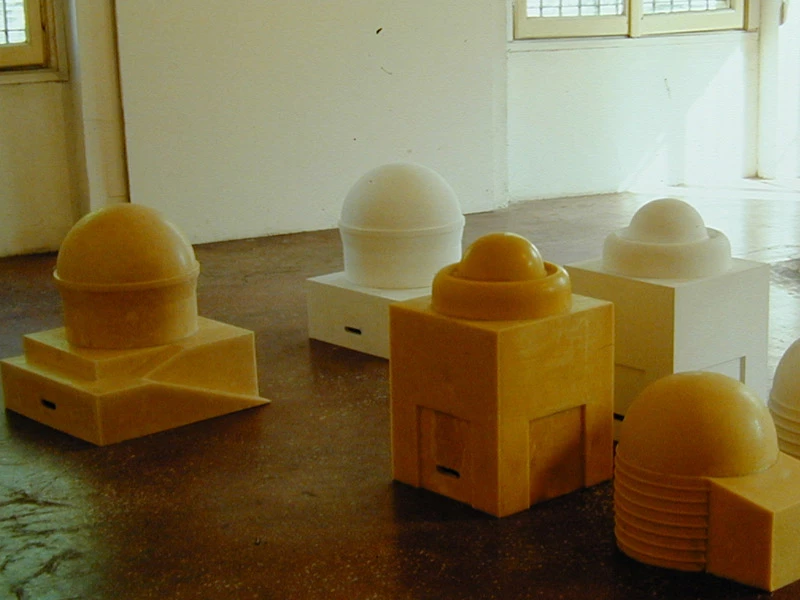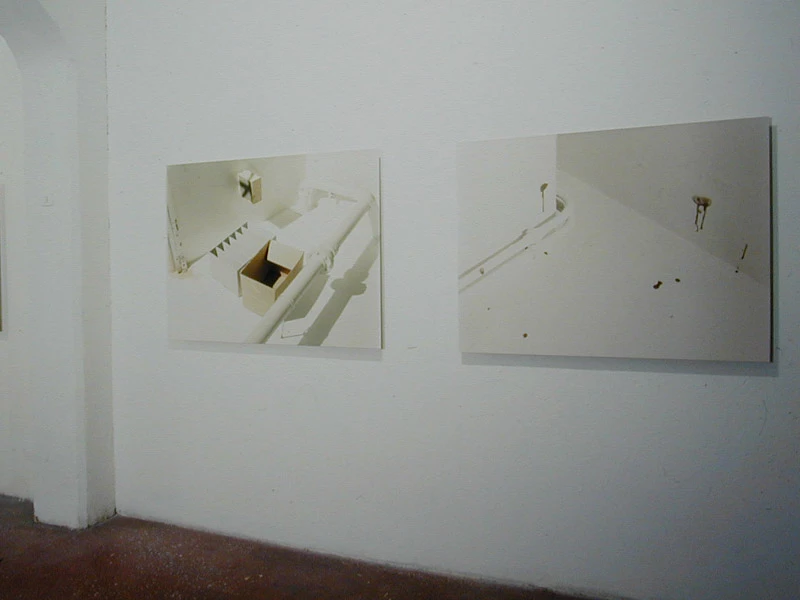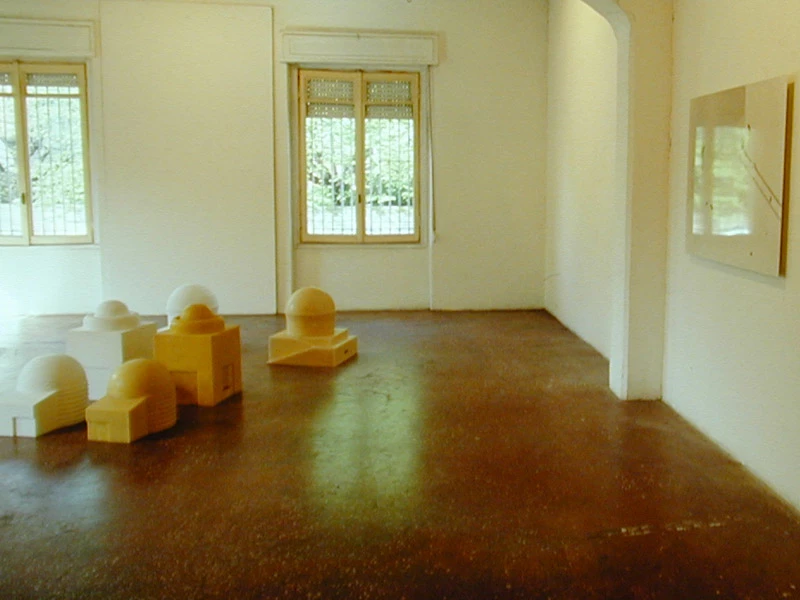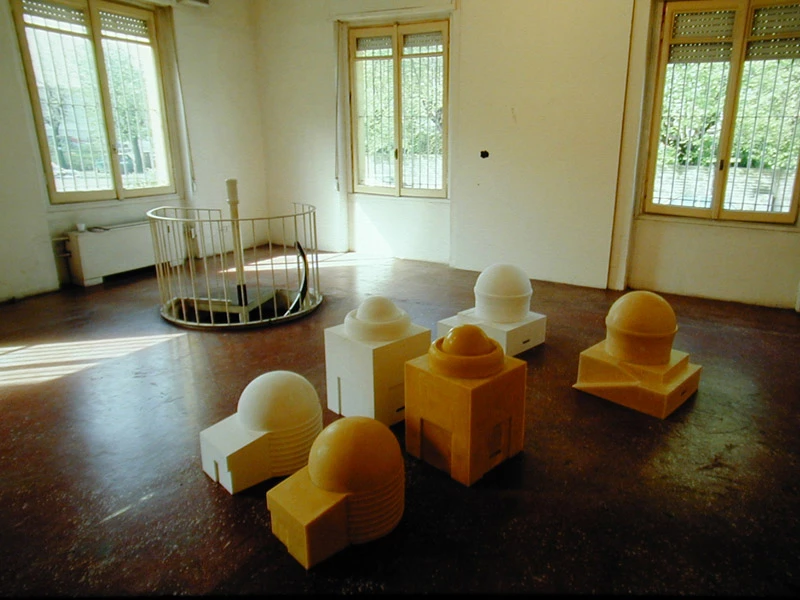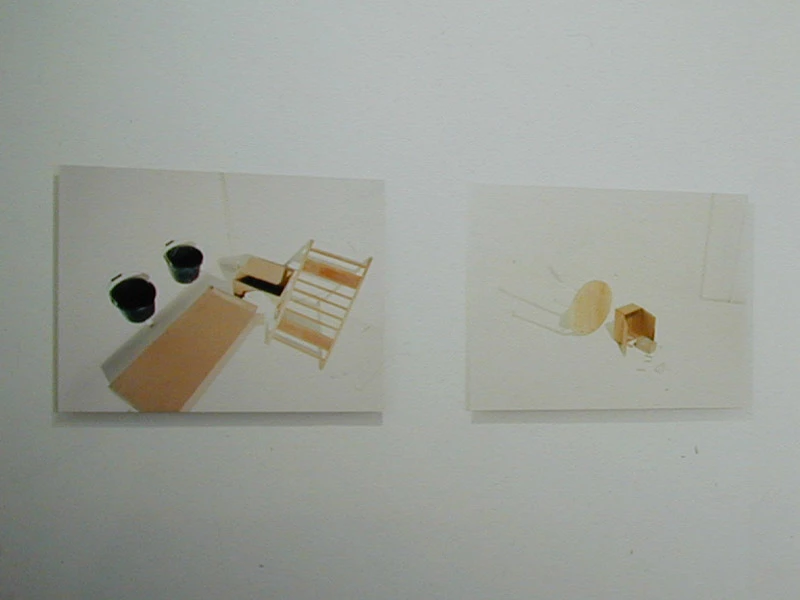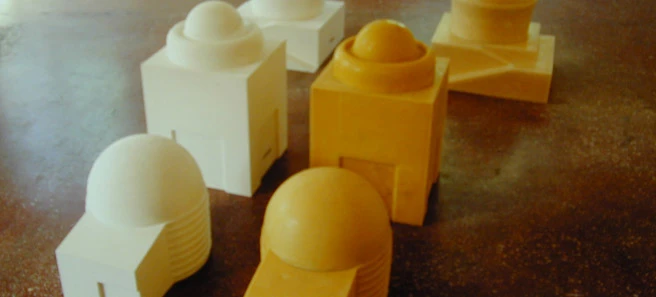Italo Zuffi • Adesso mi sento a casa
Presentazione di Cristiana Perella
05.04.1998 - 02.05.1998
In an essay titled “Das Unheimliche (The Uncanny),” Sigmund Freud defines this term as the unsettling, disorienting sensation caused by something or some event that appears familiar and known, yet reveals a dark side or an unexpected contradiction, making it difficult for our consciousness to file it away as something already understood.
A person who experiences something “unheimlich” does not, in that moment, feel properly “at home” and “as in their homeland” (which is, in fact, the meaning of the word “heimisch” to which “unheimlich” is opposed), but rather feels a subtle discomfort, an insecurity caused by the difficulty of asserting intellectual control over something new that at first glance seemed so familiar.
All of Italo Zuffi’s work aims to create this condition of ambiguity and indecision in the viewer, to make them not feel at home: in the images he presents, things are rarely what they seem or claim to be, and they never fully reveal their nature, always maintaining a certain degree of paradoxical incongruence.
Even his early works, in which he disguised himself by taking on better-known identities, played with this ambivalence, never bringing to a clear and definitive conclusion the shift between portrait and self-portrait, between self and other.
In the works presented here at Careof, the sabotage of appearances becomes more sophisticated: the compositions of scrap materials, lit like advertising still lifes and photographed, at first suggest a kind of romantic and skeptical heroization of the banal, but then reveal a much more substantial and destabilizing artificiality, subtly violating physical laws—for the white floor on which they rest is actually a ceiling.
With the inversion of up and down, the ordinary becomes the unusual, the natural turns into the unnatural, denying our perception with an effect that is all the more uncanny the more accurate the fiction is, the more inherently and seemingly pre-established its credibility—as in the image where the paint drips downward exactly as one would expect if everything were normal.
Multiple interferences generate a “threshold effect” similar to that of Alice’s mirror: upon crossing it, we first and surprisingly find a reality perfectly identical to the one we left behind, just as realistic and everyday—a different reality that could easily be mistaken for the usual one—except that, once the laws of physics have been broken, those deemed impassable by convention, this new reality hosts phenomena and possibilities the other cannot tolerate.
In the video The Reminder, the relationship between reality and fiction is once again reversed: the improbably balanced positions in which Zuffi films himself seem to be the result of illusionist tricks, and yet they are achieved in reality. Equally oxymoronic and paradoxical are the Osservatori trasportabili, in which form and function contradict each other—the absurdity of structures meant to see the outside, yet devoid of openings, objects seemingly tied to extremely precise geographic and spatial conditions, yet forced into nomadism.
Even the rational and geometric volumes clash with the soft, fragrant malleability of the natural wax used to make them. And devoid of all functionality are, finally, the shattered glass panels of Esterni, no longer able to close, protect, offer shelter, seal, or separate the inside from the outside.
When every rule is subverted from within, when nothing is familiar or customary anymore, and every door is open, Italo Zuffi feels at home.
Cristiana Perrella
